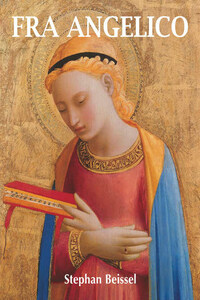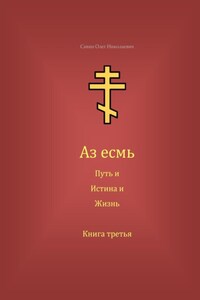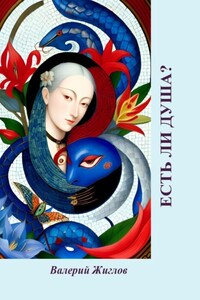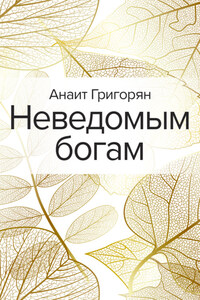1. Annunciatory Angel, 1450–1455. Tempera and gold on wood panel, 33 × 27 cm. The Detroit Institute of Arts, Detroit.
2. The Annunciation (depicted in an historied initial “R”, detail from a missel), c. 1423. Biblioteca del convento di San Marco, Florence.
At the beginning of the fifteenth century, the Dominican convent of Fiesole had a lively intellectual atmosphere. The convent was founded in 1406 by the Blessed Giovanni di Dominici Bacchini, (who later became the Archbishop of Ragusa and, in 1419, a cardinal,) in order to reestablish the former discipline and strictness of the Dominican order in the spirit of Saint Dominic. Members of the observant monasteries were expected to consecrate themselves to the saving of souls not only through study, science, and preaching, but also through applied artistic labour. Exiled from Venice, Giovanni arrived in Città di Castello near Arezzo in 1399. From there he was summoned to preach in the cathedral of Florence for Lent. San Lapo Mazzei wrote to a friend after hearing one of Giovanni’s sermons, and summarized his impressions in the following terms, “I was at Santa Liparata (the cathedral) where a Dominican friar was supposed to preach, and where he did indeed preach. I assure you that I have never heard a sermon like it, nor been so moved by so much eloquence… Everyone cried or seemed to be struck dumb and in a stupor listening to the pure Truth… He spoke of the Incarnation of God in a manner that ripped the soul from one’s body, compelling everyone present to chase after him.”[1]
Day by day, the morals of the populace purified, and the Dominici’s influence grew. In 1405, the Bishop of Fiesole gave him the land needed to build a convent and a church, and their construction was begun immediately. In 1406, religious zeal entered the establishment in the form of thirteen monks. Soon, many of the most fervent novices came to the convent in hopes of entering the Order. In 1405, the sixteen-year-old Antoninus, who would later become the bishop of Florence, († 1459), presented himself to Dominici. When asked about the nature of his studies, Antoninus showed a marked preference for canon law. Dominici responded that in the Dominican Order, novices were only admitted to this sort of study if they had already learned the Decretum Gratiani by heart. “Go then my son,” said Dominici, “And learn them. Once you know it, you can ask for admission in complete confidence.”[2]
The young Antoninus left and returned. Once Antoninus was admitted to the Order, the Father Superior sent him to Cortona, where the Blessed Lorenzo di Ripafratta had directed the novitiates of the Observant Dominicans since 1409. In 1408, two brothers knocked on the door of Fiesole’s convent, also requesting admission. The elder of the two, Guido (Guidolino), was twenty-one years old. The younger was only eighteen. Their father, Pietro, lived in village near the fortified castle of Vicchio, situated between Dicomano and Borgo San Lorenzo in the Tuscan region of Mugello, not far from where Giotto was born. Undoubtedly, these young men were also asked about their previous education, and were only admitted into the house of the Observant Dominicans once they had proven their aptitude. It so happened that the older brother had real talent as a painter, and that the younger brother was a calligrapher. At that time, Dominici was no longer in Fiesole, for in 1406, the Republic of Florence had entrusted him with a mission to Rome. Once Dominici arrived in the Eternal City, Pope Gregory XII became very attached to him. On May 12, 1409, he made Dominici a cardinal. Dominici’s successor in Fiesole gave a warm welcome to the two hopeful Dominicans; he gave them habits and named the elder Fra Giovanni (Petri del Mugello) and the younger Fra Benedetto (Petri del Mugello). He then sent them to Cortona, where as novices they were to live a life of penitence and prayer for one year. In order to understand the novitiate and the spirit that would later drive Fra Giovanni (Angelico), this passage by Dominici seems particularly apt: “I do not consider to be a good novice he who always walks with lowered eyes, who recites a long series of Psalms, who never makes mistakes when singing in the choir, who is silent and lives in peace with his brothers; nor he who loves his cell and chastises his body with discipline, who often fasts and carefully avoids contact with the outside world, giving himself over to the habits of ascetic life, and viewed by the beginners as saintliness itself. All of this is not enough. I consider a good novice to be he who perfectly, and with all of his strength, carries out the legitimate will of his superiors.” Rösler adds, “The complete renunciation of the world and oneself, the fulfillment of all of the rule’s prescriptions, the active and fervent love of God and one’s neighbor with one’s eyes always fixed on the model left by Jesus, the active desire for union with Christ; these are the foundations of a perfect life in the footsteps of Saint Dominic.”








